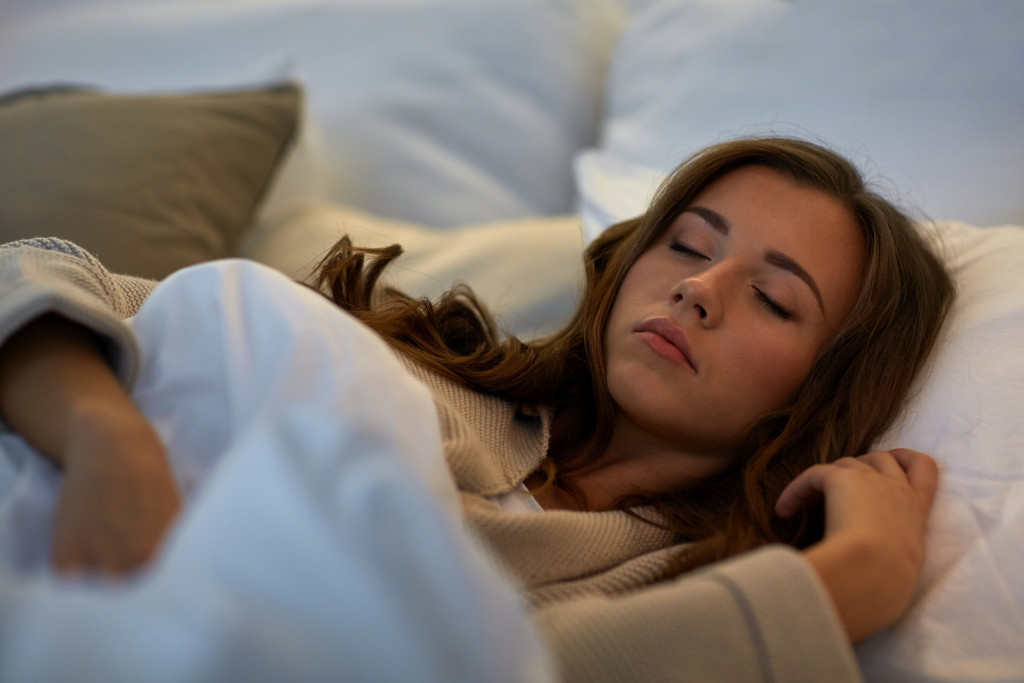There is a saying that waking up with the sun is good for your health, but just how much light does one actually need? How should you manage lighting in your room for better sleep, and how much light do you need to wake up on the right side of the bed?
Lighting plays a vital role in a person’s sleep, and it is an essential aspect of interior design. It exists for a reason, as it affects one or two things inside your home. However, not everyone is aware of how much light you need in your house, let alone in your room. Besides having a massive influence on visual appeals and functionality, it can also have profound results on your mood and well-being. Some people prefer white silk curtains (just like in the movies) in the room, but others prefer custom Roman shades for windows. It is all about knowing if you are a regular person or a vampire.
With that saying, knowing how much light you need in your room depends on you. Some people can adjust but not after being uncomfortable for a while. So, how can you transform the lighting in your room to suit your preferences? See, you do not need to be remodeling your entire home, you might simply need slight tweaking of your light bulbs, wallpaper, blinds, and even linens.
Here are some of the things that might help get that perfect lighting for a better sleeping experience
1. The bedroom needs to be dim
Human eyes work just like camera lenses, and as you know if you point your (phone) camera to a bright scenery, you need to manually adjust its focus and depth. Now, imagine waking up to the same scenario every day. Your eyes will already be too strained, and it is not yet even five minutes in the day. Even with people who like to wake up with the sun, having a room too bright in the morning is bad. If harsh light comes in your window, blinds or drapes will improve the lighting issue.
2. Maintain lighting that allows you to read a book without getting headaches
To answer the previous question on the subject, how much light do you need, you need a lighting temp that will allow you to read a book without straining your eyes. It also goes with keeping a dim room (during the day); you will need light lampshades that will be the source of light for your eyes, or you can let in a little natural light by controlling your blinds and shades.

3. Use drapes and shades
If you have insomnia, you need to be in a room that will let your mind think that it is still time for bed, even if it is already noontime. Using drapes and shades to black out your room is critical. You will soon lose track of time, allowing you to fall asleep when your eyes finally shut. See, if your mind is aware of the time of day, it will be harder to fall asleep.
However, for severe cases of insomnia, you should get professional help. As it can lead to more problematic health and wellness problems, not to mention your mental health.
4. Don’t forget to hit the lights off
Yes, we mentioned lamps and maintaining a reading light. However, having a moment at night when you turn off the lights, means you are calling it a night, and your body responds to that too. Everybody has their inner biological clock. The majority of the time, it is advisable to be shutting off the lights when you feel sleepy or tired. That is a great signal it is your time to head to bed.
Final Words
Having proper lighting in your room that is suited to your preferences and your physical needs can do wonders for your lifestyle, health, and productivity. See, lighting is both an art and a science because it influences our state of mind and sleep. If you are struggling to sleep, a lot of other factors can be considered. However, people do not really focus on lighting. What they do not know is that bedroom lighting is just as important as the mattress they are sleeping on.
If you happen to be a vampire-like person who is grumpy until you have your cup of coffee, it is best to get shades and drapes in your room. It will maintain a sense of cool in your personal space until your caffeine kicks in.

